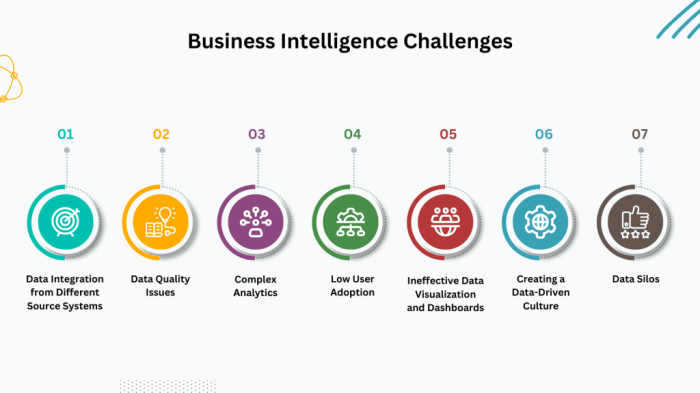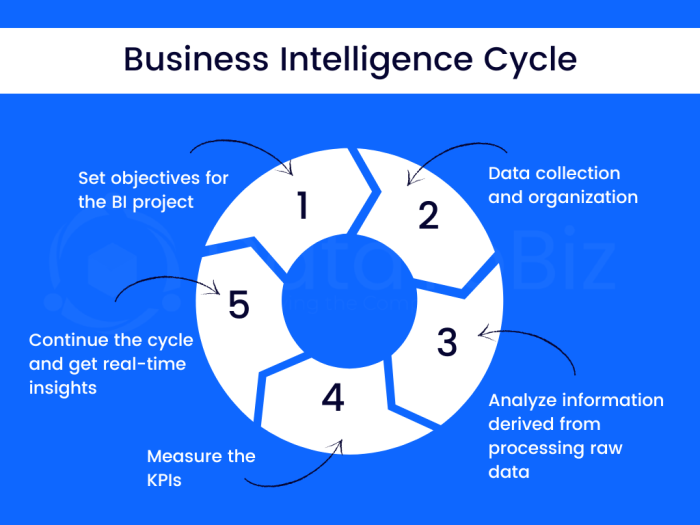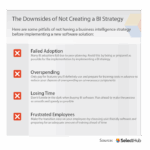Challenges faced in business intelligence projects are crucial hurdles that organizations must navigate to harness the full potential of data analytics. As businesses increasingly rely on data-driven decision-making, understanding these challenges becomes imperative for success. Common barriers such as data quality issues, technological integration difficulties, and organizational resistance can impede progress, making it essential for teams to address these concerns head-on.
Moreover, the skills gap among employees and project management complexities can further complicate the landscape of business intelligence. Organizations must identify the requisite skills for effective BI usage and implement comprehensive training programs to enhance competencies. By fostering a data-driven culture and employing best practices in project management, businesses can overcome these challenges and drive successful BI initiatives.
Identifying Common Challenges

In the realm of business intelligence (BI), organizations often encounter a myriad of challenges that can hinder the successful implementation and utilization of BI tools. These challenges can stem from various sources, including organizational structures, technology, and the quality of data available for analysis. Understanding these common obstacles is crucial for businesses aiming to leverage BI for better decision-making and improved operational efficiency.One of the most pervasive issues in BI projects is the inconsistency of data quality and availability.
Organizations frequently struggle with fragmented data stored across multiple systems, leading to discrepancies that can skew analysis and reporting outcomes. Additionally, the lack of standardized data governance can exacerbate these issues, resulting in unreliable insights that hamper strategic initiatives.
Barriers to Successful Implementation
Several key barriers can obstruct the successful rollout of business intelligence projects. It’s essential to recognize these barriers and address them proactively to ensure a smooth implementation process. The following points highlight the primary obstacles encountered:
- Resistance to Change: Employees often resist adopting new BI tools due to fear of change or lack of familiarity with the technology.
- Insufficient Training: Inadequate training programs can leave users ill-equipped to effectively utilize BI tools, leading to underutilization.
- High Costs: The financial investment required for BI infrastructure and ongoing maintenance can be a significant deterrent for organizations, particularly smaller enterprises.
- Lack of Executive Support: Without strong leadership backing, BI initiatives may struggle to gain traction and secure necessary resources.
- Integration Challenges: Integrating BI tools with existing systems can pose technical difficulties, complicating data access and analysis.
Data Quality and Availability Issues
Data quality and availability play a pivotal role in the success of business intelligence initiatives. Poor data quality can lead to flawed insights, which can negatively impact decision-making processes. Issues commonly encountered include:
- Inconsistent Data Formats: Data collected from various sources may be formatted differently, complicating data aggregation and analysis.
- Incomplete Data: Missing data can result in skewed analyses and may prevent organizations from gaining a complete understanding of their operations.
- Outdated Information: Relying on outdated data can lead to decisions based on inaccurate information, potentially jeopardizing business strategies.
- Data Silos: When data resides in isolated systems, it becomes challenging to access a comprehensive view of the organization, limiting the effectiveness of BI tools.
The successful navigation of these challenges requires a strategic approach that emphasizes data governance, user training, and effective change management. By addressing these issues head-on, organizations can unlock the full potential of business intelligence and drive informed decision-making across the enterprise.
Technological Barriers

In the rapidly evolving landscape of business intelligence (BI), technological barriers can significantly impede the success of BI projects. These barriers often stem from complexities in system integration, compatibility issues among various tools, and inherent software limitations. Navigating these challenges requires a comprehensive understanding of the technical difficulties and strategic approaches to overcome them.The integration of BI systems can present several technical challenges, particularly when organizations attempt to merge disparate data sources and tools.
Issues commonly arise from data silos, where information is trapped within isolated systems that do not communicate effectively with one another. Additionally, organizations may face obstacles due to varying data formats, leading to inconsistencies and errors during processing. These challenges can delay project timelines and result in incomplete or unreliable analytics.
Embarking on a business intelligence project requires careful planning and execution. To effectively kickstart this endeavor, it’s essential to understand the initial steps involved, which you can explore in detail through this guide on how to start a business intelligence project. Implementing the right strategies will set a solid foundation for leveraging data analytics in your organization.
Technical Difficulties in BI System Integration, Challenges faced in business intelligence projects
Successful integration of BI systems demands addressing several critical technical difficulties. The following points highlight key challenges and their implications:
- Data Silos: Isolated data repositories can restrict access and analysis, making it difficult to obtain a comprehensive view of organizational performance.
- Inconsistent Data Formats: Different tools might use varying formats, which complicates data merging and leads to potential inaccuracies.
- Legacy System Compatibility: Older systems may not support modern BI tools, resulting in integration challenges and increased costs for updates or replacements.
- Inadequate APIs: Insufficient application programming interfaces can limit data sharing between tools, restricting the seamless flow of information needed for effective analysis.
Overcoming compatibility issues between different BI tools is crucial for ensuring seamless operations. Organizations can adopt several strategies to enhance integration:
Methods for Overcoming Compatibility Issues
The following approaches can help organizations navigate compatibility issues effectively:
- Standardization of Data Formats: Establishing common data formats across tools helps facilitate smoother data integration, reducing inconsistencies.
- Utilization of Middleware: Implementing middleware solutions can bridge gaps between incompatible systems, allowing for smoother data integration.
- Investing in Flexible BI Tools: Choosing BI tools that offer extensive integration capabilities ensures compatibility with existing systems and future technologies.
- Regular Updates and Maintenance: Keeping software up to date helps mitigate compatibility issues and ensures that tools can work together effectively.
Examples of software limitations that can impact BI project success often stem from the capabilities and performance of the tools in use. Here are some common limitations that organizations may encounter:
Examples of Software Limitations Impacting BI Project Success
Understanding specific software limitations can help organizations make informed decisions regarding their BI tool selections:
- Limited Data Volume Handling: Some BI tools struggle to process large datasets efficiently, leading to slow performance or system crashes.
- Lack of Advanced Analytics Features: Basic BI tools may lack advanced analytics capabilities such as predictive analytics or machine learning, which can hinder decision-making.
- Restricted User Access: Limitations on user access can prevent team members from obtaining the insights they need, reducing overall effectiveness.
- Poor Visualization Options: Tools with inadequate visualization capabilities can fail to present data in an intuitive manner, making it difficult for stakeholders to derive actionable insights.
Organizational Resistance: Challenges Faced In Business Intelligence Projects
Organizational resistance is a prevalent challenge in business intelligence (BI) projects, often stemming from deeply embedded cultural norms and attitudes. The impact of an organization’s culture on BI project outcomes can be profound, as it influences not just the adoption of technology but also the willingness of employees to embrace data-driven decision-making processes. Understanding this dynamic is crucial for the successful implementation and sustainability of BI initiatives.
Impact of Organizational Culture on BI Project Outcomes
The culture within an organization plays a pivotal role in determining the success or failure of BI projects. A culture that values transparency, collaboration, and data-driven decision-making tends to facilitate smoother BI adoption. Conversely, an organization characterized by siloed departments, lack of trust, and resistance to change may hinder BI initiatives. Key aspects include:
-
A supportive culture encourages employee engagement with BI tools, leading to increased usage and better decision-making outcomes.
- A risk-averse culture may result in skepticism towards BI initiatives, stifling innovation and the exploration of new insights.
- Organizations with strong leadership commitment to BI can inspire confidence, fostering a proactive approach to data utilization.
- Training and resources provided in a constructive culture promote skill development, enhancing the overall effectiveness of BI tools.
Strategies for Managing Stakeholder Resistance During BI Adoption
Managing resistance from stakeholders is essential for the successful adoption of BI projects. Different stakeholders, including team members and executives, may exhibit varying degrees of resistance based on their perceptions and experiences. Effective strategies to mitigate this resistance involve:
-
Engaging stakeholders early in the BI process ensures their voices are heard, fostering a sense of ownership and reducing resistance.
The role of business intelligence in shaping decision making is undeniable. By harnessing data insights, organizations can make informed choices that significantly enhance their operations. Understanding the impact of business intelligence on decision making reveals how timely and accurate data can be a game-changer for businesses looking to thrive in competitive markets.
- Communicating the benefits of BI in terms of time savings, improved insights, and competitive advantages helps align stakeholders’ interests with project goals.
- Offering training sessions tailored to different stakeholder groups can address knowledge gaps and alleviate fears regarding new technologies.
- Establishing feedback loops allows stakeholders to express concerns and contribute to continuous improvement, enhancing their investment in the BI project.
Methods for Fostering a Data-Driven Mindset Within Organizations
To fully leverage BI initiatives, fostering a data-driven mindset is crucial. This involves shifting the organizational culture towards valuing insights derived from data. Methods to achieve this transformation include:
-
Creating a data governance framework that promotes accountability and encourages data stewardship across all levels of the organization.
- Highlighting success stories that demonstrate the tangible benefits of data-driven decisions reinforces the value of BI initiatives.
- Encouraging cross-departmental collaboration on data projects enhances knowledge sharing and builds a collective understanding of data’s importance.
- Implementing performance metrics that reflect data utilization in decision-making processes can incentivize teams to adopt a data-centric approach.
Skills Gap and Training
The effectiveness of business intelligence (BI) solutions greatly depends on the skills of the professionals managing and utilizing these tools. As organizations increasingly rely on data-driven decision-making, addressing the skills gap becomes paramount. This section delves into the essential skills for BI, Artikels a comprehensive training program, and discusses strategies for attracting and retaining BI talent.
Essential Skills for Business Intelligence
To leverage BI solutions effectively, a blend of technical and analytical skills is required. These competencies enable professionals to interpret data accurately and derive actionable insights. Key skills include:
- Data Analysis: Proficiency in analyzing large datasets to identify trends, patterns, and anomalies.
- Data Visualization: Ability to create meaningful visual representations of data that facilitate understanding and communication.
- Statistical Knowledge: Familiarity with statistical concepts and methodologies to assess data integrity and relevance.
- Database Management: Skills in managing and querying databases using SQL and other database management tools.
- Business Acumen: Understanding business processes and requirements to align BI efforts with organizational goals.
- Technical Proficiency: Knowledge of BI tools and software such as Tableau, Power BI, or QlikView.
Training Program for Team Competencies in BI
Implementing a structured training program is essential for enhancing team competencies in BI. A well-designed program should encompass various learning modalities to cater to diverse learning preferences. The following components are vital:
- Workshops and Seminars: Regular sessions led by industry experts to provide hands-on experience and theoretical knowledge.
- Online Courses: Access to e-learning platforms offering courses on BI tools, data analysis, and visualization techniques.
- Mentorship Programs: Pairing less experienced team members with seasoned professionals to foster knowledge sharing and skill development.
- Project-Based Learning: Assigning real-world projects where teams can apply their skills, promoting critical thinking and problem-solving.
- Certification Opportunities: Encouraging team members to pursue relevant certifications to validate their expertise and commitment to professional growth.
Attracting and Retaining BI Talent
To build a strong BI team, organizations must adopt strategies that attract and retain skilled professionals. Creating an appealing work environment and fostering a culture of continuous learning play crucial roles in this process. Effective strategies include:
- Competitive Compensation Packages: Offering salaries and benefits that reflect the market demand for BI skills.
- Career Development Paths: Providing clear advancement opportunities and personal development plans to motivate employees.
- Flexible Work Arrangements: Implementing remote work policies and flexible hours to enhance work-life balance.
- Innovative Projects: Engaging employees in exciting and challenging projects that encourage creativity and innovation.
- Strong Company Culture: Cultivating a collaborative and inclusive workplace that values diversity and teamwork.
“Investing in skills development not only enhances the effectiveness of BI solutions but also fosters employee loyalty and satisfaction.”
Project Management Challenges

Effective project management is crucial for the success of business intelligence (BI) initiatives. In the dynamic environment of BI projects, managing timelines, deliverables, resources, and stakeholder communication can pose significant challenges. Adopting best practices in these areas ensures that projects not only meet deadlines but also align with business objectives and deliver actionable insights.
Best Practices for Managing BI Project Timelines and Deliverables
Successful management of BI project timelines and deliverables hinges on structured planning and adaptability. Establishing clear milestones, coupled with regular reviews, helps maintain focus and momentum. Utilizing project management tools can enhance visibility and accountability across teams. Implement the following best practices to streamline your BI project management:
- Define Clear Objectives: Establish specific, measurable goals that align with business needs.
- Develop a Realistic Timeline: Use historical data to inform realistic timeframes for each phase of the project.
- Regularly Review Progress: Conduct frequent check-ins to assess progress against milestones and adjust plans as needed.
- Incorporate Agile Methodologies: Employ agile principles to accommodate changes and feedback throughout the project lifecycle.
- Utilize Project Management Software: Leverage tools that offer tracking, reporting, and collaboration features to enhance team coordination.
Resource Allocation and Budgeting for Business Intelligence Initiatives
Resource allocation and budgeting are critical components that can influence the success of BI projects. Allocating the right resources—both human and financial—is essential for delivering on project goals. To effectively manage resources and budgets, consider the following strategies:
- Conduct a Resource Inventory: Assess the skills and availability of team members to match project needs.
- Prioritize Investments: Identify key areas within the BI project that require funding and allocate resources accordingly.
- Monitor Financial Performance: Regularly review budget expenditures against project milestones to ensure financial health.
- Emphasize Cross-Training: Encourage skill development among team members to enhance flexibility and resource availability.
- Plan for Contingencies: Set aside a portion of the budget for unforeseen challenges that may arise during the project.
Checklist for Ensuring Stakeholder Engagement and Communication Throughout BI Projects
Maintaining stakeholder engagement is essential for the success of BI initiatives. Effective communication fosters collaboration and ensures that all parties are aligned with project objectives.Utilize the following checklist as a guideline for engaging stakeholders:
- Identify Key Stakeholders: List all stakeholders and understand their interests and influence on the project.
- Establish Communication Plans: Develop a strategy for regular updates and feedback loops with stakeholders.
- Set Up Regular Meetings: Schedule consistent meetings to discuss progress, challenges, and solicit input.
- Utilize Dashboards: Provide stakeholders with access to project dashboards for real-time insights on project status.
- Solicit Feedback: Actively seek stakeholder input and adjust project plans based on their insights to enhance buy-in.


